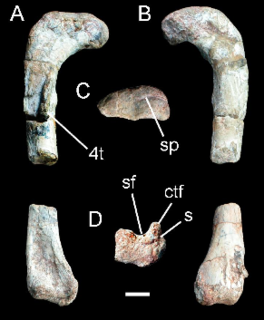 W
WAlwalkeria is a genus of basal saurischian dinosaur from the Late Triassic, living in India. It was a small bipedal omnivore.
 W
WAtrypa is a genus of brachiopod with shells round to short egg-shaped, covered with many fine radial ridges, that split further out and growthlines perpendicular to the costae and 2-3 times wider spaced. The pedunculate valve is a little convex, but tends to level out or even become slightly concave toward the anterior margin. The brachial valve is highly convex. There is no interarea in either valve. Atrypa was a cosmopolitan and occurred from the late Lower Silurian (Telychian) to the early Upper Devonian (Frasnian). Other sources expand the range from the Late Ordovician to Carboniferous, approximately from 449 to 336 Ma. A proposed new species, A. harrisi, was found in the trilobite-rich Floresta Formation in Boyacá, Colombia.
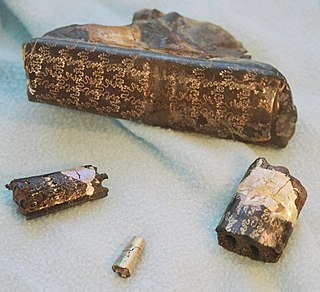 W
WBaculites is an extinct genus of cephalopods with a nearly straight shell, included in the heteromorph ammonites. The genus, which lived worldwide throughout most of the Late Cretaceous, was named by Lamarck in 1799.
 W
WBarapasaurus is a genus of basal sauropod dinosaur from Early Jurassic rocks of India. The only species is B. tagorei. Barapasaurus comes from the lower part of the Kota Formation, that dates back to the Sinemurian and Pliensbachian stages of the early Jurassic. It is therefore one of the earliest known sauropods. Barapasaurus is known from approximately 300 bones from at least six individuals, so that the skeleton is almost completely known except for the anterior cervical vertebrae and the skull. This makes Barapasaurus one of the most completely known sauropods from the early Jurassic.
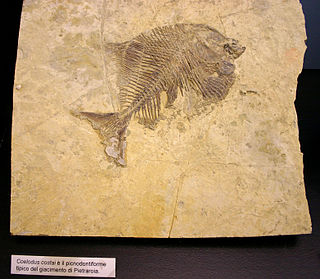 W
WCoelodus is an extinct genus of pycnodontiform fish from the Late Jurassic to early Paleocene (Danian). Fossils of the genus have been found in:JurassicGardies, FranceCretaceousYacoraite Formation, Argentina El Molino Formation, Bolivia Baharîje Formation, Egypt Ahlen and Bückeberg Formations, Germany Nimar Formation, India Alburni, Italy Damergou, Zinder, Niger Cochirleni Formation, Romania La Huérguina and Cabana Formations, Spain Pierre Shale, Kansas Tunbridge Wells Sand Formation, England Tucumcari Formation, New Mexico Twin Mountains and Paluxy Formations, TexasPaleoceneTremp Formation, Spain
 W
WConiophis is an extinct genus of snakes from the late Cretaceous period. The type species, Coniophis precedes, was about 7 cm long and had snake-like teeth and body form, with a skull and a largely lizard-like bone structure. It probably ate small vertebrates. The fossil remains of Coniophis were first discovered at the end of the 19th century in the Lance Formation of the US state of Wyoming, and were described in 1892 by Othniel Charles Marsh. For the genus Coniophis, a number of other species have been described. Their affiliation is, however, poorly secured, mostly based on vertebrae descriptions from only a few fossils.
 W
WConocardium is an extinct genus of Rostroconchian mollusk. Its shell-mouth grew to be 2–3 inches (51–76 mm) across. It fed on tiny plants and animals in the water. Fossils have been found all over the world from Ordovician to Permian formations.
 W
WDiacodexis is an extinct genus of small herbivore mammals belonging to the family Dichobunidae which lived in North America, Europe and Asia from 55.4 mya to 46.2 mya and existing for approximately 9.2 million years .
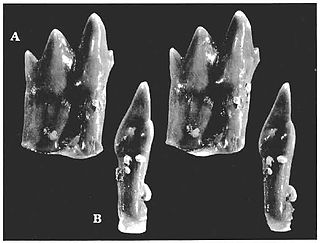 W
WDyskritodon is a genus of extinct mammal from the Early Cretaceous of Morocco, and possibly the Early Jurassic of India. Of uncertain affinities, it is tentatively described as a eutriconodont.
 W
WEndothiodon is an extinct genus of large dicynodont from the Late Permian. Like other dicynodonts, Endothiodon was an herbivore, but it lacked the two tusks that characterized most other dicynodonts. The anterior portion of the upper and lower jaw are curved upward, creating a distinct beak that is thought to have allowed them to be specialized grazers.
 W
WExaeretodon is an extinct genus of fairly large, low-slung traversodontid cynodonts from the southern parts of Pangea. Four species are known, from various formations. E. argentinus is from the Carnian-age Cancha de Bochas Member of the Ischigualasto Formation in the Ischigualasto-Villa Unión Basin in northwestern Argentina. E. major and E. riograndensis are from the Carnian-age portion of the Santa Maria Formation of the Paraná Basin in southeastern Brazil. E. statisticae is from the Carnian-age Lower Maleri Formation of India.
 W
WFavosites is an extinct genus of tabulate coral characterized by polygonal closely packed corallites. The walls between corallites are pierced by pores known as mural pores which allowed transfer of nutrients between polyps. Favosites, like many corals, thrived in warm sunlit seas, feeding by filtering microscopic plankton with their stinging tentacles and often forming part of reef complexes. The genus had a worldwide distribution from the Late Ordovician to Late Permian.
 W
WGigantopithecus is an extinct genus of ape from the Early to Middle Pleistocene of southern China, represented by one species, G. blacki. Potential identifications have also been made in Thailand, Vietnam, and Indonesia. The first remains of Gigantopithecus, two third molar teeth, were identified in a drugstore by anthropologist Ralph von Koenigswald in 1935, who subsequently described the ape. In 1956, the first mandible and over 1,000 teeth were found in Liucheng, and numerous more remains have since been found in at least 16 sites. Only teeth and 4 mandibles are known currently, and other skeletal elements were likely consumed by porcupines before they could fossilise. Gigantopithecus was once argued to be a hominin, a member of the human line, but it is now thought to be closely allied with orangutans, classified in the subfamily Ponginae.
 W
WGlossopteris is the largest and best-known genus of the extinct Permian order of seed ferns known as Glossopteridales. The genus Glossopteris refers only to leaves, within a framework of form genera used in paleobotany. Species of Glossopteris were widespread over the supercontinent of Gondwana during the Permian epoch, where they formed the dominant component of high latitude polar forests. Glossopteris fossils were critical in recognizing former connections between the various fragments of Gondwana: South America, Africa, India, Australia, New Zealand, and Antarctica.
 W
WHalysites is an extinct genus of tabulate coral. Colonies range from less than one to tens of centimeters in diameter, and they fed upon plankton.
 W
WHindeodus is an extinct genus of conodonts in the family Anchignathodontidae. The generic name Hindeodus is a tribute to George Jennings Hinde, a British geologist and paleontologist from the 1800s and early 1900s. The suffix -odus typically describe’s the animal’s teeth, essentially making Hindeodus mean Hinde-teeth.
 W
WHyperodapedon is a genus of rhynchosaurs from the Late Triassic period. Fossils of the genus have been found in Africa, Asia, Europe and North and South America. Its first discovery and naming was found by Thomas Henry Huxley in 1859. Hyperodapedon was a herbivore that used its beaked premaxilla and hindlimbs to dig for plants in dry land.
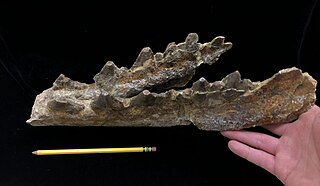 W
WKharodacetus is a genus of protocetid cetacean from the middle Eocene of Kutch, Gujarat, southwestern India.
 W
WLamplughsaura is a genus of saurischian dinosaur from the Sinemurian-age Dharmaram Formation of India, dating from between 196 and 190 million years ago. The type and only species is Lamplughsaura dharmaramensis. It is known from several partial skeletons of a large quadrupedal animal up to 10 meters (33 ft) long, and was either a basal sauropod or, less likely, a more basal sauropodomorph.
 W
WManubrantlia was a genus of lapillopsid from the Early Triassic Panchet Formation of India. This genus is only known from a single holotype left jaw, given the designation ISI A 57. Despite the paucity of remains, the jaw is still identifiable as belonging to a relative of Lapillopsis. For example, all three of its coronoid bones possessed teeth, the articular bone is partially visible in lateral (outer) view, and its postsplenial does not contact the posterior meckelian foramen. However, the jaw also possesses certain unique features which justify the erection of a new genus separate from Lapillopsis. For example, the mandible is twice the size of any jaws referred to other lapillopsids. The most notable unique feature is an enlarged "pump-handle" shaped arcadian process at the back of the jaw. This structure is responsible for the generic name of this genus, as "Manubrantlia" translates from Latin to the English expression "pump-handle". The type and only known species of this genus is Manubrantlia khaki. The specific name refers to the greenish-brown mudstones of the Panchet Formation, with a color that had been described as "khaki" by the first British geologists who studied the formation.
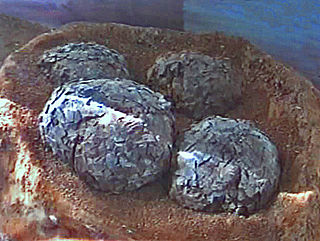 W
WMegaloolithus is an oogenus of dinosaur egg. Some eggs belonging to this oogenus may have been laid by the titanosaur Hypselosaurus. They are known for having thick eggshells, at least 1.5 millimetres (0.059 in) thick, and the nearly spherical shape of the eggs. They are primarily found in India and Europe, but some specimens have been found in South America.
 W
WMetoposaurus meaning "front lizard" is an extinct genus of stereospondyl temnospondyl amphibian, known from the Late Triassic of Germany, Italy, Poland, and Portugal. This mostly aquatic animal possessed small, weak limbs, sharp teeth, and a large, flat head. This highly flattened creature mainly fed on fish, which it captured with its wide jaws lined with needle-like teeth. Metoposaurus was up to 3 m long and weighed about 450 kg. Many Metoposaurus mass graves have been found, probably from creatures that grouped together in drying pools during drought.
 W
WA nummulite is a large lenticular fossil, characterized by its numerous coils, subdivided by septa into chambers. They are the shells of the fossil and present-day marine protozoan Nummulites, a type of foraminiferan. Nummulites commonly vary in diameter from 1.3 cm to 5 cm and are common in Eocene to Miocene marine rocks, particularly around southwest Asia and the Mediterranean. Fossils up to six inches wide are found in the Middle Eocene rocks of Turkey. They are valuable as index fossils.
 W
WObergfellia is an extinct genus of stem perissodactyl from the middle Eocene, discovered in 1980. Its known range includes northern India and Pakistan.
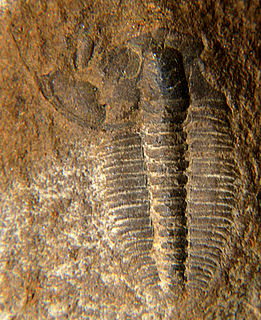 W
WOlenus is a genus of Upper Cambrian ptychopariid trilobite.
 W
WOphiceras is a genus of smooth, evolute ceratitid ammonites from the Early Triassic, with a rounded venter. Fossils of the genus have been found in Armenia, Azerbaijan, China and India.
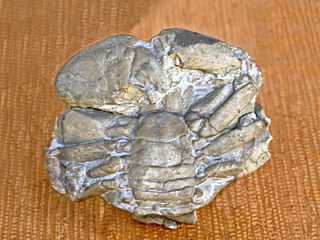 W
WPalaeocarpilius is an extinct genus of crabs belonging to the family Carpiliidae. The type species of this genus is Palaeocarpilius macrocheilus.
 W
WPalmoxylon is an extinct genus of palm named from petrified wood found around the world.
 W
WPlanolites is an ichnogenus found throughout the Phanerozoic that is made during the feeding process of worm-like animals. The traces are generally small, 1–5 mm (0.039–0.197 in), unlined, and rarely branched, with fill that differs from the host rock.
 W
WPristerodon is an extinct genus of dicynodont therapsid from the Late Permian of South Africa, Zambia and India.
 W
WPtychoceratodus is an extinct genus of prehistoric sarcopterygians or lobe-finned fish originally named as a species of Ceratodus in 1837. It was a lungfish from the Mesozoic era (Triassic-Cretaceous), and the only members of the family Ptychoceratodontidae. One species, P. oldhami, was named in 2018 based on remains from the Carnian-aged Tiki Formation (India). The first named species, which is also the type species, is P. phillipsi, which was named in 1837 by Louis Agassiz as a species of Ceratodus and moved to a separate genus in 1926.
 W
WReineckeia is an extinct genus of ammonoid cephalopods belonging to the family Reineckeiidae.
 W
WSanajeh is a genus of late Cretaceous madtsoiid snake from western India. A fossil described in 2010 from the Lameta Formation was found coiled around an egg and an adjacent skeleton of a 50 cm long sauropod dinosaur hatchling. This suggests that the snake preyed on hatchling sauropods at nesting sites.
 W
WShringasaurus is an extinct genus of archosauromorph reptile from the Middle Triassic (Anisian) of India. It is known from the type and only known species, S. indicus. Shringasaurus is known from the Denwa Formation in the state of Madhya Pradesh. Shringasaurus was an allokotosaur, a group of unusual herbivorous reptiles from the Triassic, and is most closely related to the smaller and better known Azendohsaurus in the family Azendohsauridae. Like some ceratopsid dinosaurs, Shringasaurus had two large horns over its eyes that faced up and forwards from its skull. These horns were likely used for display, and possibly during fights with other Shringasaurus, much like what has been suggested for the horns of ceratopsids like Triceratops. Shringsaurus also bears similarities to sauropodomorph dinosaurs, such as its long neck and teeth, and likely occupied a similar ecological niche as a large browsing herbivore before they had evolved.
 W
WSphenodiscus is an extinct genus of acanthoceratacean ammonite. The genus has been found from many continents and is thought to have had a large global distribution during the Maastrichtian stage of the Late Cretaceous. It was one of the last ammonoids to have evolved before the entire subclass became extinct at the end of the period during the Cretaceous–Paleogene extinction event.
 W
WWadiasaurus is an extinct genus of dicynodont, the remains of which were found in Yerrapalli Formation, India.